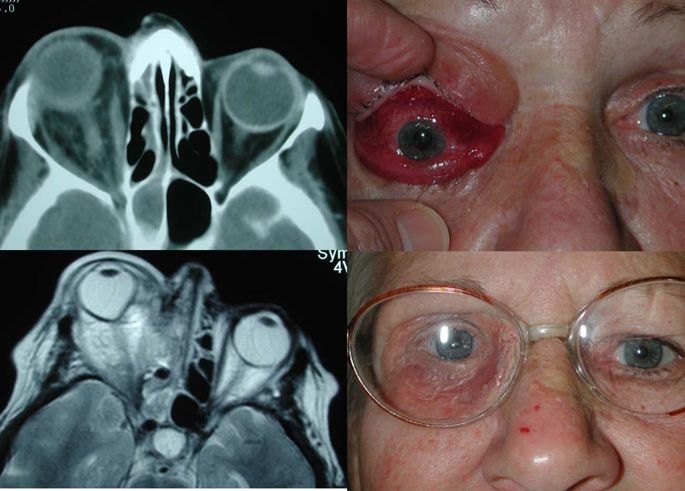Our official English website, www.x-mol.net, welcomes your
feedback! (Note: you will need to create a separate account there.)
Orbital mycoses in an adult subtropical population
Eye ( IF 2.8 ) Pub Date : 2019-12-10 , DOI: 10.1038/s41433-019-0733-3 Allister S Lee 1, 2 , Princeton W Y Lee 1 , Anthony Allworth 3 , Tai Smith 4 , Timothy J Sullivan 1, 2
Eye ( IF 2.8 ) Pub Date : 2019-12-10 , DOI: 10.1038/s41433-019-0733-3 Allister S Lee 1, 2 , Princeton W Y Lee 1 , Anthony Allworth 3 , Tai Smith 4 , Timothy J Sullivan 1, 2
Affiliation

|
To report the spectrum of fungal infections involving the orbit encountered in an Australian subtropical population with respect to presentation, host risk factors, involved pathogens, treatment and outcomes. A retrospective chart review was performed on all adult patients with orbital mycosis treated by the senior author (TJS) from 1986 to 2017 in a tertiary setting. Thirty cases of fungal infection involving the orbit were included in this case series. Of these, 26 patients had invasive disease and four patients had non-invasive disease. Causative organisms included mucormycosis (16), aspergillus (8) and other fungi (7). Common risk factors included haematological disorders or malignancy, neutropenia, corticosteroid use and diabetes mellitus. Mucormycosis in three immunocompetent patients was caused by Apophysomyces elegans. Orbital apex syndrome was observed in approximately one third of patients at initial ophthalmological assessment. Amphotericin B was used in most cases of mucormycosis, while there was a more varied spectrum of anti-fungal use in other fungal infections. Seven patients with mucormycosis proceeded to orbital exenteration with a survival rate of 43%. No patients with other orbital fungal infections were exenterated. Orbital mycoses are not only opportunistic but true pathogenic infections. While initial symptoms may be varied, the development of orbital apex syndrome should raise suspicion for this condition, regardless of patient immune status or age. Survival and visual outcomes are often poor with invasive disease. Multidisciplinary team management with early orbital specialist involvement is essential.
中文翻译:

成人亚热带人群的眼眶真菌病
报告在澳大利亚亚热带人群中遇到的涉及眼眶的真菌感染谱,包括表现、宿主风险因素、涉及的病原体、治疗和结果。对 1986 年至 2017 年在三级机构中由资深作者 (TJS) 治疗的所有成年眼眶真菌病患者进行了回顾性图表审查。该病例系列包括 30 例涉及眼眶的真菌感染病例。其中,26 名患者患有侵袭性疾病,4 名患者患有非侵袭性疾病。致病微生物包括毛霉菌病 (16)、曲霉 (8) 和其他真菌 (7)。常见的危险因素包括血液病或恶性肿瘤、中性粒细胞减少症、皮质类固醇的使用和糖尿病。三名免疫功能正常的患者的毛霉菌病是由秀丽隐杆线虫引起的。在最初的眼科评估中,大约三分之一的患者观察到眶尖综合征。在大多数毛霉菌病病例中使用两性霉素 B,而在其他真菌感染中使用的抗真菌药谱更加多样化。7 名毛霉菌病患者进行了眼眶切除术,存活率为 43%。没有其他眼眶真菌感染的患者被清除。眼眶真菌病不仅是机会性感染,而且是真正的病原体感染。虽然最初的症状可能会有所不同,但无论患者的免疫状态或年龄如何,眶尖综合征的发展都应引起对这种情况的怀疑。侵袭性疾病的生存和视力结果通常很差。早期轨道专家参与的多学科团队管理至关重要。
更新日期:2019-12-10
中文翻译:

成人亚热带人群的眼眶真菌病
报告在澳大利亚亚热带人群中遇到的涉及眼眶的真菌感染谱,包括表现、宿主风险因素、涉及的病原体、治疗和结果。对 1986 年至 2017 年在三级机构中由资深作者 (TJS) 治疗的所有成年眼眶真菌病患者进行了回顾性图表审查。该病例系列包括 30 例涉及眼眶的真菌感染病例。其中,26 名患者患有侵袭性疾病,4 名患者患有非侵袭性疾病。致病微生物包括毛霉菌病 (16)、曲霉 (8) 和其他真菌 (7)。常见的危险因素包括血液病或恶性肿瘤、中性粒细胞减少症、皮质类固醇的使用和糖尿病。三名免疫功能正常的患者的毛霉菌病是由秀丽隐杆线虫引起的。在最初的眼科评估中,大约三分之一的患者观察到眶尖综合征。在大多数毛霉菌病病例中使用两性霉素 B,而在其他真菌感染中使用的抗真菌药谱更加多样化。7 名毛霉菌病患者进行了眼眶切除术,存活率为 43%。没有其他眼眶真菌感染的患者被清除。眼眶真菌病不仅是机会性感染,而且是真正的病原体感染。虽然最初的症状可能会有所不同,但无论患者的免疫状态或年龄如何,眶尖综合征的发展都应引起对这种情况的怀疑。侵袭性疾病的生存和视力结果通常很差。早期轨道专家参与的多学科团队管理至关重要。











































 京公网安备 11010802027423号
京公网安备 11010802027423号